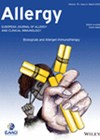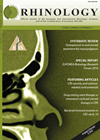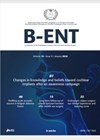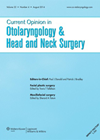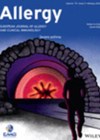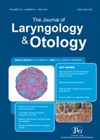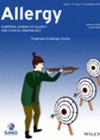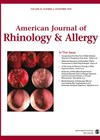
Journal Reviews
To montelukast or not to montelukast
Both histamine and cysteinyl leukotrienes play an important role in both seasonal allergic rhinoconjunctivitis (SARC) and asthma. A combination therapy against both was shown to give benefit both in vitro and in vivo. Authors wanted to test the efficacy of...
Herpes zoster and SSNHL
Some studies suggest that viral infections may increase the risk of a sudden sensorineural hearing loss (SSNHL). The described longitudinal study explored whether herpes zoster may be a factor that increases the risk of SSNHL. Medical history in reference to...
Some guidelines for treating rhinological patients during the COVID-19 pandemic
This is a very interesting and informative multinational European guide to the treatment of rhinology patients during the current pandemic, describing the safe delivery of a rhinological service to patients. Much of this has become well understood and standard practice...
Chorda tympani in middle ear surgery
This was a prospective study at a single Belgian centre that aimed to monitor postoperative taste problems after middle ear surgery. The authors also looked at the influence of pathology and manipulation of chorda tympani (CT) on its function. Taste...
Endoscopic stapes surgery
This retrospective Turkish study looked at the audiological and surgical outcomes of 40 patients who underwent endoscopic stapes surgery over a three-year period. To assess the learning curve, the patients were divided into two groups based on the date of...
Updates on current evidence for biologics in chronic rhinosinusitis
For a comparatively short piece, this article manages to pack in a lot of important information about a complex emerging area of rhinology – immunologically targeted therapy (biologics). Immunologically targeted therapy is a rapidly progressing and expanding domain which is...
The polyp shrinker
Inflammatory markers, including T2 cells beta common (βc) cytokines IL-3, IL5 and granulocyte-macrophage colony-stimulating factor (GM-CSF), are known to play an important role in chronic rhinosinusitis with nasal polyps (CRSwNP). CSL311, a monoclonal antibody (mAb), was developed to target human...
Reasons for attending annual hearing aid review appointments
The aim of this study was to investigate what factors influence hearing aid users’ decision to attend or not attend an annual hearing aid review (HAR) appointment. Two separate surveys were created for attendees and non-attendees. An invitation letter was...
A safe and useful surgical procedure for allergic rhinitis?
Although the best management of allergic rhinitis is medical, intractable cases are not uncommon. Immunotherapy helps but is more practical if there is a single allergen involved. The authors compare the effects of submucosal inferior turbinoplasty alone with submucosal turbinoplasty...
TIVA in FESS: a meta-analysis
This meta-analysis is from Rochester, New York, and aims to add more evidence for the use of TIVA in endoscopic sinus surgery (FESS) to arm rhinologists keen for a quick, bloodless FESS in the discussion with anaesthetists who prefer inhalation....
Allergic rhinitis, the usual suspects
Allergic rhinitis (AR) is characterised by allergen binding to IgE on mast cells and basophils and subsequent histamine, prostaglandine D2 (PGD2) and cysteinyl leukotrienes (cysLTs) release causing early-phase response. This is followed by late-phase response mediated by eosinophils. Other cells,...
Smell training is also effective in older patients
Olfactory loss is a common problem with a significant impact on quality of life. It has been demonstrated that olfactory training (OT) improves olfactory function in younger patients, but this study focuses in on patients aged 45 years and older....

